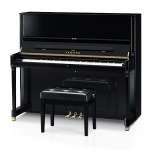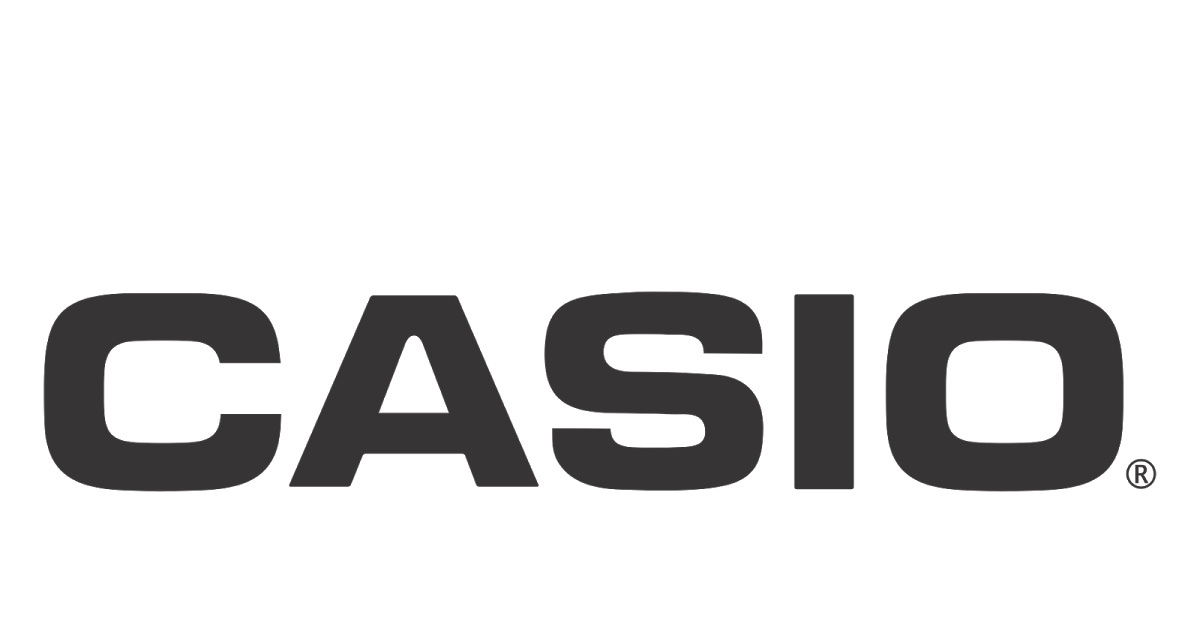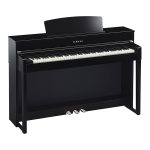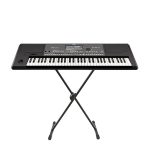Ultimate Piano/Digital/Keyboard Buying Guide

In this guide, we’ll be going over all the important things you should know before buying an Acoustic Piano, digital piano or keyboard.
This guide will help you better understand how to pick the instrument that’s right for YOU and narrow down your choice to 1-2 models that suit you the best.
ACOUSTIC PIANO INTRODUCTION

You’ll have to answer this question for yourself based on your personal needs and preferences, but the information below can help you make a good decision.
Let’s start with some key facts about the piano. Modern pianos have been around for over 300 years. Bartolomeo Cristofori invented the first pianoforte in Venice, Italy using a hammer mechanism to produce a sound from the vibration of the strings. While many musical instruments produce sound in this manner, the way you cause the strings to vibrate will differ.
With an acoustic piano, you push down on the keys to cause a hammer to hit and bounce off of the strings. This allows the strings to vibrate and allows the pianist to give expression to the music played by varying the force, speed, release, etc. when hitting the keys.


Picture on the left : Sir Bartolomeo Cristofori
Picture on top : The first piano ever invented in year 1688, currently the piano was display in Italian
An acoustic piano typically contains over 10,000 parts and come in two basic styles: a grand piano and an upright (or vertical) piano. Grand pianos range in size from 4 feet 7 inches to over 9 feet in length and are horizontal. The strings on the grand piano are parallel to the ground. Gravity pulls the hammers back down to their resting points after hitting the string or strings. Upright pianos can also be categorized by size and include the spinet (36 to 39 inches), the console (39 to 42 inches) and the studio (42 inches or higher).

Pros of Acoustic Piano
Acoustic pianos can be beautiful, with a variety of finishes and styles to match your personal aesthetic.
Acoustic Pianos is a standard exam piano, suitable for children to practice for exam.
They can be a focal point for your home, serving as a piece of furniture in their own right.
Acoustic pianos have really nice key feel, plus a certain richness in their tone that is hard to replicate with other options.
Cons of Acoustic Piano
Professional tuning is inconvenient and expensive, and it really shows if you wait too long between tunings. My ears are unhappy just thinking about it!
Acoustic piano players sometimes have to manually transpose songs. This is an advanced topic, but trust me when I say it matters once you start learning to play!
The bulk and weight of acoustic pianos is something you have to be ready to contend with – moving one is not for the faint of heart!
CASIO CDP-S100 (88-KEY DIGITAL PIANO PACKAGE)
CASIO CDP-S150 (88-KEY DIGITAL PIANO PACKAGE)
CASIO CDPS100 (88-KEY DIGITAL PIANO)
CASIO CDPS150 (88-KEY DIGITAL PIANO)
DIGITAL PIANO INTRODUCTION
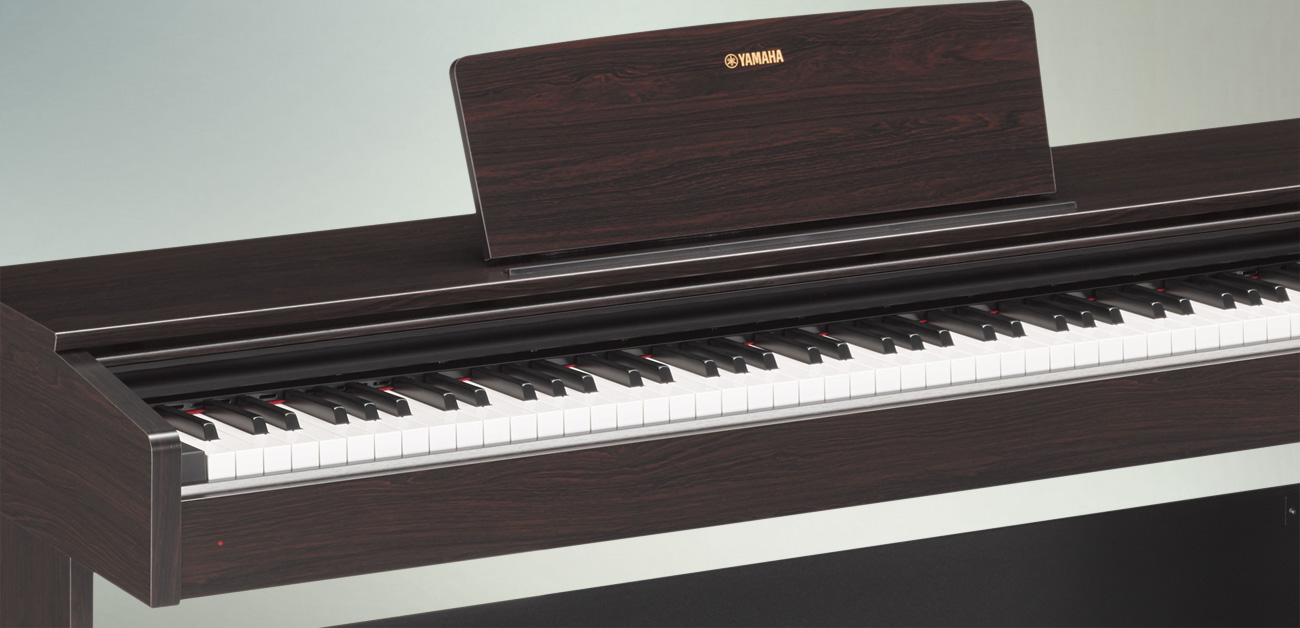
Digital pianos are electronic instruments that was invented by Sir Harold Burroughs Rhodes. It reproduce sounds that have been “sampled” and stored on computer chips inside the piano. A digital piano has 61 to 88 keys, but no hammers, strings or any of the moving parts you find in an acoustic piano. The sound is produced when the pressure you put on a key tells the computer inside what sound to make.
Mr. Rhodes introduced the 73-note Fender Rhodes Suitcase Piano, which combined a keyboard, amplifier and speaker cabinets. In 1970, the company started making the Stage Piano, without the speakers, which could be transported more easily and plugged in to amplifiers or sound systems. Full, 88-key models were also made.
The Rhodes company was sold to the Roland Corporation, a Japanese instrument manufacturer, in 1987.


Picture on the left : Sir Harold Rhodes
Picture on right : 73-note Fender Rhodes Suitcase Piano
Electronic keyboards and organs don’t have weighted key action. You can hear the sounds the digital keyboard makes through built-in speakers, an external sound system or headphones.

Pros of Digital Piano
No need for manual tuning makes digital piano maintenance a breeze.
The ability to transpose adds versatility without requiring a lot of extra skill.
Having a headphone option means you can tune out the world around you and focus on your playing. Plus, those around you won’t be able to listen in unless you want them to.
Cons of Digital Piano
While slimmer than their acoustic cousins, digital pianos are still pretty heavy. You’re not going to be able to pop it in the trunk of your car and head to a local open-mic night.
The feel of digital piano keys simply doesn’t provide the same experience that acoustic piano keys do. (However, with weighted key options you can get pretty close.)
KEYBOARD INTRODUCTION

In Easy terms, Keyboard and Piano are two different musical instruments which have an identical glance of the black and white keys in octaves, but works differently. You may very well have one of these tucked in your closet or basement! That’s because keyboards have become pretty common over the years. There are a couple of features keyboards offer that can make them a good choice:
Pros of Keyboard
Portability is the name of the game here – you can pack up your keyboard and set it up just about anywhere.
There are a huge range of accessories out there for keyboards, letting you choose individual options and features that you want. You can even opt for a petite size if you’re really tight on space (just
Cons of Keyboard
Key feel is the number one area where keyboards often lack. So if you want a more authentic feel, you’ll have to spend a bit more on weighted key options.
I mentioned this already as a positive, but it could be a negative too: You have to choose the accessories you want. If you want to just plug in and play, it can feel like an extra hassle to figure out what bench, stand, and sustain pedals are best for you.
CONCLUSION : ACOUSTIC VS DIGITAL PIANO - WHICH IS BETTER ?

So now that we’ve understood how the digital and acoustic pianos function, let’s put them side by side.
Sound
One of the most important factors to consider is the sound of the instrument. Unsurprisingly, the acoustic piano produces a better sound. The acoustic piano, as mentioned before, produces a sound when the hammer strikes a string. It gives you an authentic, acoustic sound that has a warmer, more resonant tone. You also have better control over the articulation and expression of the musical notes. A digital piano, on the other hand, can only mimic the sound of the acoustic piano. Its sound is a digital file and thus doesn’t allow for the same acoustic nuances. Nonetheless, a high-end digital piano could sound better than a low-end acoustic piano.
Maintenance
An acoustic piano requires more maintenance. The wooden exterior, the felt on its hammers, and the steel strings are all delicate features that need proper care. Therefore, you have to be mindful of an acoustic piano’s
- Tuning. To keep your piano in tune, it has to be tuned about 1-2 times every year. Often, you would require the assistance of a professional, which will increase your expenses.
- Vulnerability to humidity and temperature fluctuations. Wood and felt are highly sensitive to big changes in temperature or humidity levels. If not kept under a suitable environment, the components of an acoustic piano could be affected. (Ideally, your acoustic piano should be kept in an environment of relative humidity ranging between 45% and 70% and a constant temperature of approximately 20˚C or room temperature.)
A technician can restore your piano to optimal precision in a process called regulation, which involves adjustments ranging from turning screws to sanding down wood surfaces.
Versatility - Utility and Portability
What the digital piano may lack in terms of sound, they make it up with some additional features. These features allow you to use the digital piano in more than one way, making it a more versatile instrument:
- Other instrument sounds: With the digital piano, you can produce the sound of almost any instruments, ranging from a saxophone to a choir. You can play around with the different types of sound, and choose the sound that suits your music best. Moreover, you can start a drum beat track and play to the beat, which will transform your keyboard into a small ensemble.
- Recording: Residing at the side of the digital piano is a port that connects the piano to your computer. This connection allows you to record and store your playing as a digital file. This is a very useful tool, especially for budding songwriters, who can manipulate their recordings with softwares.
- Volume control: The digital piano comes with a volume knob and a headphone output, allowing you to practice anywhere without disturbing others.
- Portable: Digital pianos differ in types and sizes, but they are all more portable than their acoustic counterparts. Most digital pianos can be moved by one person. Their smaller size also makes them a keyboard-instrument of choice in gigs or performances.
Touch Sensitivity
The touch and feel of playing a digital piano and an acoustic piano can be very different. One reason is the weight of the keys. Some strength is required when you strike the keys of an acoustic piano. As for digital pianos, a gentle touch on their keys could produce a sound. Many manufacturers make up for this by introducing weighted keys, which mimic the heaviness of the acoustic piano keys.
Some pianists turn away from digital pianos because of their lack of touch sensitivity. The acoustic piano is more touch-sensitive.The strength and movement of your fingers determine the tone of the sound, and you can produce different shades of sound on the same key. But on the digital piano, because the sounds produced are digital, there is a finite number of tones that can be produced. In other words, even though you played a key differently, the sound might be the same. This limitation can in turn affect the expression of your music.
Price
In general, an acoustic piano costs more than a digital piano. A low- to mid-tier upright acoustic piano could cost $1000-$3000, while a digital one could be priced at anywhere from $200-500 onwards.
With that said, the resale value of a digital piano is much lower than that of an acoustic piano. It is difficult to gauge the resale value, which largely depends on the model and the condition of the piano. But a digital piano depreciates much quicker than an acoustic piano, because many new, more advanced models of digital pianos are released every year. Therefore, while the acoustic piano is more costly, it is a better investment in the long-run.
Pedals
An acoustic piano comes with three pedals: soft pedal, sostenuto pedal, and sustain pedal. (The sustain pedal is commonly used in all genres of music, while the soft and sostenuto pedal aren’t frequently used.) But some digital pianos come with only a sustain pedal, and some (in particular portable digital pianos) don’t come with any. Of course, you can purchase a sustain pedal separately, but the other two pedals—sostenuto and soft pedal—aren’t always available as an add-on option. It is thus important to determine whether the presence of the pedals will make a difference in your playing experience.
THE DECISION
To paint a clearer picture for you, we are going to bring in some examples/case studies. We are bringing back the stories of Timmy, Sarah, Jason, and Stephanie. Based on their individual profiles, we will recommend either the digital or acoustic piano to them.
1. Timmy is a high school student who loves listening to pop music. He wants to learn the piano so that he can play his favourite Ed Sheeran and Bruno Mars songs. Timmy is going to college in a few years time, and he’s starting to save up. And who knows? Maybe he will join a pop band some day.
→ My recommendation for Timmy: the digital piano
- If you have to save up for college, or do not want to heavily burden your parents with the cost of a piano, then the digital piano is a good option.
- For prospective college students who plan to stay in school dormitories, the digital piano is more portable and you can take it with you as you move around campus.
- The digital piano is suitable for pop-songs lovers and has functions that go well with pop songs.
- The digital piano is also the keyboard-instrument of choice for those planning to join pop bands.
2. Sarah is a mother of three. She has to work from 9 to 5, Monday to Friday, just like many of us. Sarah is serious about learning the piano and hopes to take a piano exam after 1 or 2 years of learning. She’s planning to take piano lessons on the weekends. Her children are still too young, but she would like them to pick up piano in the near future.
→ My recommendation for Sarah: the acoustic piano
- Acoustic pianos are better long-term investments.
- If you practice on the weekends or the evenings, you don’t really have to worry about disturbing others, so it isn’t necessary to get a digital piano for quieter practice sessions.
- Some music institutions don’t allow you to play on a digital piano for exams.
3. Jason is a busy working adult, and often won’t reach home until 8 pm. He lives with his parents, who go to bed early. Despite his busy schedule, Jason wants to learn the piano. But he’s not sure if his interest will last.
→ My recommendation for Jason: the digital piano
- If you practice late at night, you don’t want to disturb your family members who are already asleep. Make use of the digital piano’s functions and play with a pair of headphones on.
- For the fickle-minded, or for those who wouldn’t sustain a hobby for long, go with the digital piano. Just imagine how wasteful it would be to purchase an acoustic piano, use it for 6 months, and then leave it to collect dust thereafter.
4. Stephanie has retired. Now that she has a lot of free time, she wants to invest her efforts in learning the piano and eventually become an advanced pianist. With the money that she has saved over the years, she has finally decided to buy a piano. Stephanie currently spends most of her time at home.
→ My recommendation for Stephanie: the acoustic piano
- When the cost isn’t a huge concern, go with the acoustic piano. An average digital piano wouldn’t be suitable for advanced players.
- If you spend most of your time practicing at home, the portability and weight of your piano wouldn’t be a concern.
Of course, these characters aren’t molded to be identical to you, but you could probably identify with some of them and have a better idea of how lifestyle and environment match the choice between a digital and an acoustic piano.



